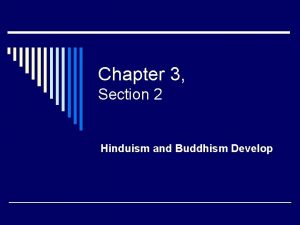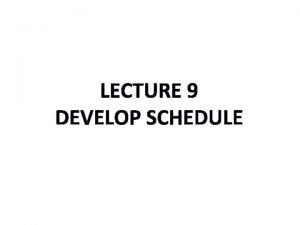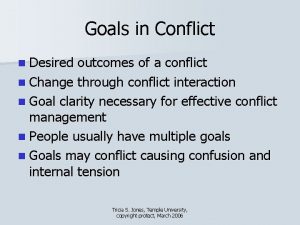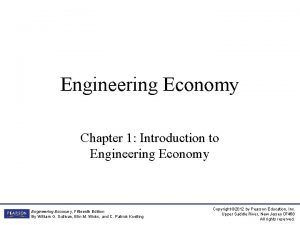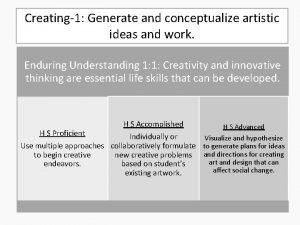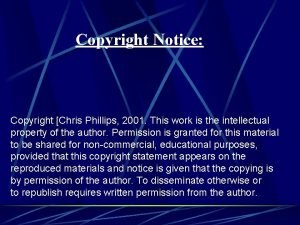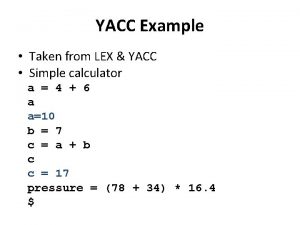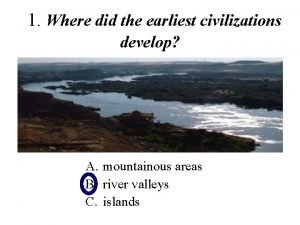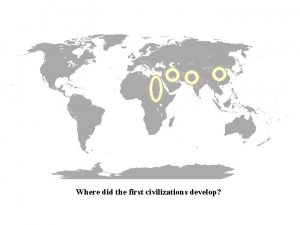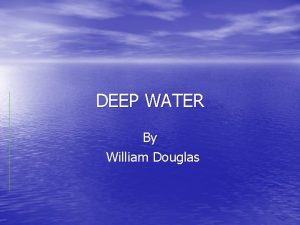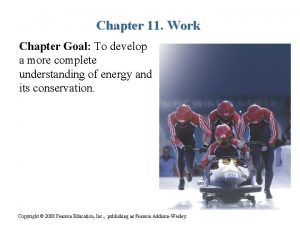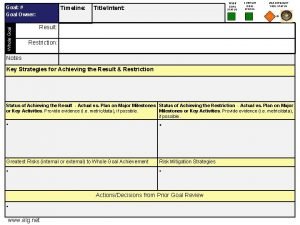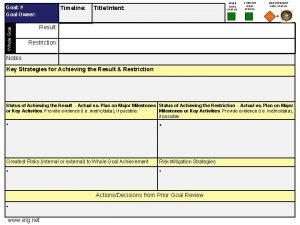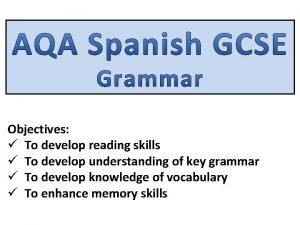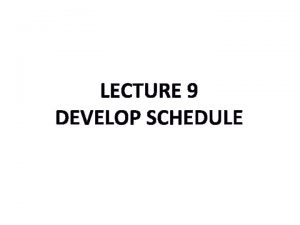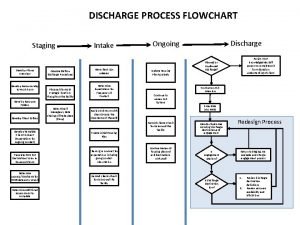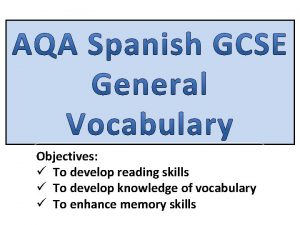Chapter 11 Work Chapter Goal To develop a

























































- Slides: 57

Chapter 11. Work Chapter Goal: To develop a more complete understanding of energy and its conservation. Copyright © 2008 Pearson Education, Inc. , publishing as Pearson Addison-Wesley.

Ch 11 Student Learning Objectives • To expand on the basic energy model. • To recognize transformations between kinetic, potential, and thermal energy. • To define work and use the work-kinetic energy theorem. • To develop a complete statement of the law of conservation of energy. Copyright © 2008 Pearson Education, Inc. , publishing as Pearson Addison-Wesley.

Our first energy model – an isolated system • If there are no non-perpendicular forces other than those involved in potential energy (i. e. gravity, spring), kinetic and potential energies can be transformed each other with no loss. • There is no change in the total energy of the system. Copyright © 2008 Pearson Education, Inc. , publishing as Pearson Addison-Wesley.

What if we want to add (or take away) energy from our system? Copyright © 2008 Pearson Education, Inc. , publishing as Pearson Addison-Wesley.

Work: the transfer of energy to a body by application of a force W > 0: The environment does work on the system and the system’s energy increases. W < 0: The system does work on the environment and the system’s energy decreases. Copyright © 2008 Pearson Education, Inc. , publishing as Pearson Addison-Wesley.

Find the relationship between a component of force parallel to motion (Fs) and kinetic energy (K) Fs = mas = m dv/dt Using the Chain Rule: m dv/dt = m (dv/ds) (ds/dt) where ds/dt is v Fs = mv(dv/ds) Now take the integral of both sides: = ½ mvf 2 – ½ mv 02 Copyright © 2008 Pearson Education, Inc. , publishing as Pearson Addison-Wesley.

Work-Kinetic Energy Theorem. = ½ mvf 2 – ½ mv 02 where work has been defined as: note there is no work done by any component of force that is perpendicular to the displacment. Copyright © 2008 Pearson Education, Inc. , publishing as Pearson Addison-Wesley.

Work-Kinetic Energy Theorem. Since the right-hand side is the change in kinetic energy: = ½ mvf 2 – ½ mv 02 or: W = ∆K This result is known as the Work-Kinetic Energy Theorem. Note that there is no mention of U, potential energy, as of yet. Copyright © 2008 Pearson Education, Inc. , publishing as Pearson Addison-Wesley.

Work and Kinetic Energy A force acts on a particle as the particle moves along the saxis from si to sf. The force component Fs parallel to the saxis causes the particle to speed up or slow down, thus transferring energy to or from the particle. We say that the force does work on the particle. As the particle is moved by this single force, its kinetic energy changes as follows: Copyright © 2008 Pearson Education, Inc. , publishing as Pearson Addison-Wesley.

A particle moving along the x-axis experiences the force shown in the graph. If the particle has 2. 0 J of kinetic energy as it passes x = 0 m, what is its kinetic energy when it reaches x = 4 m? A. B. C. D. Copyright © 2008 Pearson Education, Inc. , publishing as Pearson Addison-Wesley. 2 J 4 J 6 J 10 J

Work Done by a Constant Force A particle experiences a constant force which makes an angle θ with respect to the particle’s displacement, ∆r. The work done is Both F and θ are constant, so they can be taken outside the integral. Thus This as the dot product of the force vector and the displacement vector: Copyright © 2008 Pearson Education, Inc. , publishing as Pearson Addison-Wesley.

Work done by a constant Force Therefore, for a constant force: W = |F∆r| cos θ Copyright © 2008 Pearson Education, Inc. , publishing as Pearson Addison-Wesley.

Which force does the most work? A. the 10 N force B. the 8 N force C. The 6 N force D. Same by all Copyright © 2008 Pearson Education, Inc. , publishing as Pearson Addison-Wesley.

A crane lowers a steel girder into place at a construction site. The girder moves with constant speed. Consider the work Wg done by gravity and the work WT done by the tension in the cable. Which of the following is correct? A. B. C. D. E. Wg and WT are both zero. Wg is negative and WT is negative. Wg is negative and WT is positive. Wg is positive and WT is negative. Copyright © 2008 Pearson Education, Inc. , publishing as Pearson Addison-Wesley.

The Work Done by a Variable Force To calculate the work done on an object by a force that either changes in magnitude or direction as the object moves, we use the following: We must evaluate the integral either geometrically, by finding the area under the curve, or by actually doing the integration (!). Copyright © 2008 Pearson Education, Inc. , publishing as Pearson Addison-Wesley.

Conservation of Mechanical Energy revisited If no energy is added or removed from the system, the initial energy and the final energy must be the same: K 0 + Ug 0 + Us 0 = K + Ug + Us If energy is added or removed via work, this becomes: K 0 + Ug 0 + Us 0 + W = K + Ug + Us Copyright © 2008 Pearson Education, Inc. , publishing as Pearson Addison-Wesley.

Conservation of Mechanical Energy revisited K 0 + Ug 0 + Us 0 + W = K + Ug + Us It seems this would conflict with the Work-Kinetic Energy, W = K – K 0 Unless potential energy U is a form of work. Copyright © 2008 Pearson Education, Inc. , publishing as Pearson Addison-Wesley.

Conservative Forces Which of the cases shown at right results in the most work done by the gravitational force? Recall, for a constant force: W = |F∆r| cos θ, where θ is the angle between the force (mg in this case) and the displacement. A B C D E. all result in the same work Copyright © 2008 Pearson Education, Inc. , publishing as Pearson Addison-Wesley.

Conservative Forces Ug = mgy so in this case, ∆U = mg∆y, which is a negative number Copyright © 2008 Pearson Education, Inc. , publishing as Pearson Addison-Wesley.

Conservative Forces It can be shown that for all conservative forces, there is an associated potential energy such that Wc. F = - ∆UF. Conservative forces include gravity, the spring force, the electric force, and the magnetic f. orce Copyright © 2008 Pearson Education, Inc. , publishing as Pearson Addison-Wesley.

EOC #36 A particle moves from A to D while experiencing a force of N. When is the most work done by the force? a. b. c. d. Path ABD Path ACD Path AD this is a conservative force, so all are equal Copyright © 2008 Pearson Education, Inc. , publishing as Pearson Addison-Wesley.

The Work-Kinetic Energy Theorem when Nonconservative Forces Are Involved A force for which the work is not independent of the path is called a non-conservative force. It is not possible to define a potential energy for a non-conservative force. If Wc is the work done by all conservative forces, and Wnc is the work done by all non-conservative forces, then But the work done by the conservative forces is equal to ( -∆U), so the work-kinetic energy theorem becomes Copyright © 2008 Pearson Education, Inc. , publishing as Pearson Addison-Wesley.

Energy Bar Charts We may express the conservation of energy concept as an energy equation. We may also represent this equation graphically with an energy bar chart. Copyright © 2008 Pearson Education, Inc. , publishing as Pearson Addison-Wesley.

Conservation of Mechanical Energy, revisited K 0 + Ug 0 + Us 0 + Wnc = K + Ug + Us can be rewritten as: ∆K + ∆U = Wnc and ∆K + ∆U = ∆Emech = Wnc Therefore mechanical energy is conserved if there are no non-conservative forces doing work on the system. Copyright © 2008 Pearson Education, Inc. , publishing as Pearson Addison-Wesley.

Finding Force from Potential Energy so Fs = d. W/ds The work done by a conservative force can be expressed as a negative change in the potential energy associated with that force: W = - ∆U Therefore: Fs = - d. U/ds and - ∆U Copyright © 2008 Pearson Education, Inc. , publishing as Pearson Addison-Wesley.

A function and its derivative Fs = - d. U/ds The derivative of a function shows the trend of change of that function. • If the derivative is zero, the function is not changing (but not necessarily 0!). • If the derivative is constant, the function is changing at a constant rate. • If the derivative is increasing/decreasing the function is changing increasingly faster/slower. • The negative sign is a bit of a challenge. Copyright © 2008 Pearson Education, Inc. , publishing as Pearson Addison-Wesley.

• The top graph is of the gravitational force, mg which we model as constant. In our coordinate system it is negative. • The gravitational potential energy curve is linear (changing at a constant rate), with a positive slope equal to the magnitude of mg. Copyright © 2008 Pearson Education, Inc. , publishing as Pearson Addison-Wesley.

A particle moves along the x-axis with the potential energy shown. The force on the particle when it is at x = 4 m is A. B. C. D. Copyright © 2008 Pearson Education, Inc. , publishing as Pearson Addison-Wesley. 2 N -2 N 4 N -4 N

Force and Potential Energy A 100 g particle experiences only the one-dimensional, conservative force shown in the figure. a. Draw a graph of potential energy from x = 0 m to x = 5 m. Assume U = 0 J at 0 m. b. The particle is shot toward the right from x = 1. 0 m with a speed of 25 m/s. What is the particle’s total mechanical energy? Copyright © 2008 Pearson Education, Inc. , publishing as Pearson Addison-Wesley.

EOC #37 a. see graph below b. Total Emech = 51. 25 Emech = (K + U) c. See graph d. x = 2. 56 m Copyright © 2008 Pearson Education, Inc. , publishing as Pearson Addison-Wesley.

Dissipative Forces – Two perspectives Dissipative forces (e. g. friction and drag) can be modeled in two ways: 1. One can consider the dissipative force as an external, non-conservative force that is always negative and takes energy away from the system: K 0 + Ug 0 + Us 0 + Wnc – Wdis = K + Ug + Us Copyright © 2008 Pearson Education, Inc. , publishing as Pearson Addison-Wesley.

Dissipative Forces – Two perspectives 2. One can consider the dissipative force as increasing thermal energy of the system, as discussed in the text: K 0 + Ug 0 + Us 0 + Wnc = K + Ug + Us + ∆Eth This method is probably the more correct way to think about it. However ∆Eth can only be computed as work (e. g. ∆Eth due to friction is ukn ∆s), so in the end it doesn’t matter where you include it on the bar chart or the equation. Pick a method and stick with it Copyright © 2008 Pearson Education, Inc. , publishing as Pearson Addison-Wesley.

Conservation of Energy Copyright © 2008 Pearson Education, Inc. , publishing as Pearson Addison-Wesley.

A child at the playground slides down a pole at constant speed. Consider the pole and the child to be the system. This is a situation in which: A. U ® Eth. Emech is conserved. B. U ® Eth. Emech is not conserved but Esys is. C. U ® Wext. Neither Emech nor Esys is conserved. D. U ® K. Emech is not conserved but Esys is. E. K ® Eth. Emech is not conserved but Esys is. Copyright © 2008 Pearson Education, Inc. , publishing as Pearson Addison-Wesley.

EOC #28 How much work is done by the environment on the system? A. 1 J B. -1 J C. 2 J D. -2 J Copyright © 2008 Pearson Education, Inc. , publishing as Pearson Addison-Wesley.

Power The rate at which energy is transferred or transformed is called the power, P, and it is defined as The unit of power is the watt, which is defined as 1 watt = 1 W = 1 J/s. Copyright © 2008 Pearson Education, Inc. , publishing as Pearson Addison-Wesley.

Four students run up the stairs in the time shown. Rank in order, from largest to smallest, their power outputs Pa to Pd. Copyright © 2008 Pearson Education, Inc. , publishing as Pearson Addison-Wesley.

EOC # 32 (revised a bit) • At midday, solar energy strikes the earth with an intensity of about 342 W/m 2. This means, on the average, every square meter of real estate receives 342 J of energy every second! What is the area of a solar collector that could collect 150 MJ of energy in 1 hour? a. 42 m 2 b. 4. 39 x 105 m 2 c. 122 m 2 Copyright © 2008 Pearson Education, Inc. , publishing as Pearson Addison-Wesley.

EOC #48 A runaway truck ramp near Denver, CO slopes upward at 6. 0° and has a large coefficent of rolling friction, ur = 0. 40. Find the length of a ramp that will stop a 15, 000 kg truck that enters the ramp at 35. 0 m/s. a. Draw an energy bar chart for this situation. b. Solve. Copyright © 2008 Pearson Education, Inc. , publishing as Pearson Addison-Wesley.

EOC #48: Answer = 124 meters A runaway truck ramp near Denver, CO slopes upward at 6. 0° and has a large coefficent of rolling friction, ur = 0. 40. Find the length of a ramp that will stop a 15, 000 kg truck that enters the ramp at 35. 0 m/s. a. Draw an energy bar chart for this situation. b. Use work and energy and kinematics to solve. Copyright © 2008 Pearson Education, Inc. , publishing as Pearson Addison-Wesley.

EOC #55 A 5. 0 kg box slides down a 5. 0 m high frictionless hill starting from rest. It slides across a 2 -m long “rough” horizontal section with uk = 0. 25. At the end of the horizontal section, the surface is again frictionless and the box hits a horizontal spring with k = 500 N/m. a. How fast is the box going before reaching the rough surface? b. How fast is it going just before hitting the spring? c. How far is the spring compressed? d. How many complete one-way crossings can the box make before coming to rest? Copyright © 2008 Pearson Education, Inc. , publishing as Pearson Addison-Wesley.

EOC #55 - Answers A 5. 0 kg box slides down a 5. 0 m high frictionless hill starting from rest. It slides across a 2 -m long “rough” horizontal section with uk = 0. 25. At the end of the horizontal section, the surface is again frictionless and the box hits a horizontal spring with k = 500 N/m. a. How fast is the box going before reaching the rough surface? 9. 9 m/s b. How fast is it going just before hitting the spring? 9. 4 m/s c. How far is the spring compressed? 0. 94 m d. How many complete one-way crossings can the box make before coming to rest? 10 trips Copyright © 2008 Pearson Education, Inc. , publishing as Pearson Addison-Wesley.

EOC # 50 • Use work and energy to find the impact speed of the 2. 0 kg block in the figure. The coefficient of kinetic friction between the table and the 3. 0 kg block is 0. 15. The 3. 0 kg block is more than 1. 5 m from the end of the table. Copyright © 2008 Pearson Education, Inc. , publishing as Pearson Addison-Wesley.

EOC # 50 • Use work and energy to find the impact speed of the 2. 0 kg in the figure. The coefficient between the table and the 3. 0 kg block is 0. 15. • v = 3. 0 m/s Copyright © 2008 Pearson Education, Inc. , publishing as Pearson Addison-Wesley.

EOC #56 • The spring is compressed 50 cm and used to launch a 100 kg student. The track is frictionless until it starts up the incline. Then it has a coefficient of kinetic friction of 0. 15. • a. What is the student’s speed just after losing contact with the spring? • b. How far up the incline does the student go? Copyright © 2008 Pearson Education, Inc. , publishing as Pearson Addison-Wesley.

EOC #56 • The spring is compressed 50 cm and used to launch a 100 kg student. The track is frictionless until it starts up the incline. Then it has a coefficient of kinetic friction of 0. 15. • a. What is the student’s speed just after losing contact with the spring? 14. 14 m/s • b. How far up the incline does the student go? 32. 1 m. Copyright © 2008 Pearson Education, Inc. , publishing as Pearson Addison-Wesley.

EOC #74 • The spring constant is 1000 N/m. The spring is compressed 15 cm, then launches the block. The coefficient of kinetic friction is 0. 20. The horizontal surface is frictionless. What distance d does the block sail through the air? Copyright © 2008 Pearson Education, Inc. , publishing as Pearson Addison-Wesley.

EOC #74 • The spring constant is 1000 N/m. The spring is compressed 15 cm, then launches the block. The coefficient of kinetic friction is 0. 20. The horizontal surface is frictionless. What distance d does the block sail through the air? 6. 68 m. Copyright © 2008 Pearson Education, Inc. , publishing as Pearson Addison-Wesley.

Ranking Task – Work Energy 5 balls with equal initial kinetic energies experience different forces acting over different displacements shown by the arrows. Rank from greatest to smallest the final kinetic energies of the balls. Copyright © 2008 Pearson Education, Inc. , publishing as Pearson Addison-Wesley.

Calculating the work done by a constant force Copyright © 2008 Pearson Education, Inc. , publishing as Pearson Addison-Wesley.

Tactics: Calculating the work done by a constant force Copyright © 2008 Pearson Education, Inc. , publishing as Pearson Addison-Wesley.

Workbook #19 The graph shows the potentialenergy curve of a particle moving along the x-axis under the influence of a conservative force. a. At which intervals of x is the force on the particle to the right (positive)? b. At which intervals of x is the force on the particle to the left (negative)? c. At what value(s) of x is the force on the particle maximum? Copyright © 2008 Pearson Education, Inc. , publishing as Pearson Addison-Wesley. d, e, f look in workbook

Workbook #19 d. force is zero at: x=2 m, x=5 m, x=8 m (where slope is zero). Copyright © 2008 Pearson Education, Inc. , publishing as Pearson Addison-Wesley.

EOC problems 26, 27, 28 Copyright © 2008 Pearson Education, Inc. , publishing as Pearson Addison-Wesley.

EOC #26 - Answer Copyright © 2008 Pearson Education, Inc. , publishing as Pearson Addison-Wesley.

EOC #27 - Answer Copyright © 2008 Pearson Education, Inc. , publishing as Pearson Addison-Wesley.

Workbook #26 a. If you push an object 10 m with a 10 N force in the direction of motion, how much work is done? b. How much power much you provide to push the object in • 1 s • 10 s • 0. 1 s Copyright © 2008 Pearson Education, Inc. , publishing as Pearson Addison-Wesley.
 Model of group work
Model of group work Chapter 3 section 2 hinduism and buddhism develop
Chapter 3 section 2 hinduism and buddhism develop Chapter 4 section 1 work and machines answer key
Chapter 4 section 1 work and machines answer key Why did a stale- mate develop on the western front?
Why did a stale- mate develop on the western front? Why did a stale- mate develop on the western front?
Why did a stale- mate develop on the western front? Competency based job description sample
Competency based job description sample Igneous rock
Igneous rock Personal skills
Personal skills Approaches to develop social factors
Approaches to develop social factors Develop schedule in project management
Develop schedule in project management Alarm clock use case diagram
Alarm clock use case diagram Develop discrepancy example
Develop discrepancy example Develop discrepancy example
Develop discrepancy example Hamlet's dull revenge pdf
Hamlet's dull revenge pdf History and development of guidance in the philippines
History and development of guidance in the philippines Prospective goals definition
Prospective goals definition Basic knowledge of food and beverage
Basic knowledge of food and beverage Master data management roadmap ppt
Master data management roadmap ppt How do we develop our self concept
How do we develop our self concept Self concept and lifestyle
Self concept and lifestyle Describe an approach to develop the physical factor
Describe an approach to develop the physical factor Disadvantages of mental rehearsal in sport
Disadvantages of mental rehearsal in sport Approaches to develop emotional factors
Approaches to develop emotional factors Approaches to develop emotional factors
Approaches to develop emotional factors Develop project charter inputs
Develop project charter inputs What should you do to develop perceptive listening skills?
What should you do to develop perceptive listening skills? Why do we use coaching to develop marines
Why do we use coaching to develop marines 깃허브 이슈
깃허브 이슈 How can we develop our village
How can we develop our village Develop the alternatives engineering economy
Develop the alternatives engineering economy Tizen sdk install
Tizen sdk install What is brand equity management system
What is brand equity management system Generate and conceptualize artistic ideas and work
Generate and conceptualize artistic ideas and work Chris phillips just develop it
Chris phillips just develop it Describe the new accountability in terms of romi
Describe the new accountability in terms of romi Develop vs implement
Develop vs implement Simple calculator using lex and yacc
Simple calculator using lex and yacc How did the renaissance develop in northern europe?
How did the renaissance develop in northern europe? Teaching with contrived experiences examples
Teaching with contrived experiences examples Develop new approaches to public governance and engagement
Develop new approaches to public governance and engagement Contents of crm strategy
Contents of crm strategy How did scientists understanding of cells develop
How did scientists understanding of cells develop What civilization did the himalayas separate china from
What civilization did the himalayas separate china from คืออะไร
คืออะไร How to develop functional literacy
How to develop functional literacy Why does conflict develop?
Why does conflict develop? Mengembangkan positioning merek
Mengembangkan positioning merek Discover define develop deliver
Discover define develop deliver Agriculture in sangam age
Agriculture in sangam age Developing a sound outlook in life
Developing a sound outlook in life How did douglas develop extreme fear of water?
How did douglas develop extreme fear of water? Develop
Develop England and france develop
England and france develop Scientists discover how develop brains
Scientists discover how develop brains What single factor controls humidity
What single factor controls humidity How did the holocaust develop and what were its results
How did the holocaust develop and what were its results Is the prime factor in the development of social skills
Is the prime factor in the development of social skills Sharp develop download
Sharp develop download

